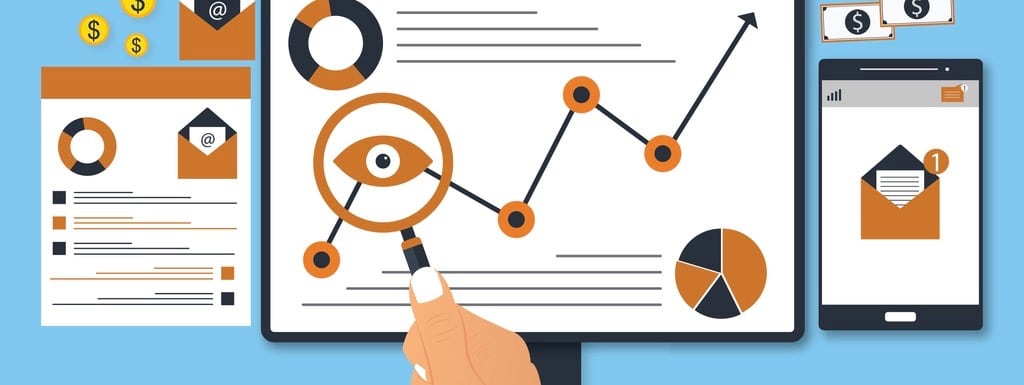Marketers deal with an abundance of data. From building effective campaigns to tracking customer journeys and responses—there’s a valuable data point for almost every single thing. Something that can benefit marketing funnels and yield better results.
In this post, we’ll dive deep into the heart of all data that marketers deal with, i.e., campaign tracking. You cannot promise any sales or fruitful marketing efforts until you are sure of your strategies. And the only way to be confident of your strategies is to track the output of each campaign that you launch.
If you’re a young marketer striving with the same, you’ll find this post super useful. We’ll learn:
- What’s the point of tracking campaigns?
- How to track campaigns from start to end?
- Tips to automate tracking overtime
Let’s get started!
Benefits of tracking marketing campaigns
Since you have a lot on your plate, measuring the performance of your marketing campaign might seem like an additional task to you. You might feel like dropping it altogether.
But here are four benefits of Tracking marketing campaigns that prove dropping out is a bad idea:
Measured & targeted expenditure
Perhaps, the best benefit of measuring campaigns is that all your efforts become data-backed. You are no longer shooting your shots blindly.
As you measure KPIs, inputs, and relative outputs, you learn what’s working and what isn’t. It helps determine budget allocation, i.e., which aspect should you spend more on?
For example, if your PPC campaign for a certain keyword is not generating enough leads, you can revise the strategy and invest in better keywords. Instead of just waiting for luck to knock on your door, you take control of it!
In this way, measuring marketing campaigns makes your marketing efforts more cost-efficient.
Optimizes for customer wants
Marketing campaigns bring plentiful opportunities for A/B testing. When planning campaigns, you can devise two variants and track the results of both to find your customer wants. Depending on the type of response you get, you can optimize all of your marketing campaigns for customer wants.
For example, suppose you run an A/B test on an email campaign and discover that receivers click on one type of button more than the other. You can embed this button on your landing pages as well.
Sources newer ideas
As you track data, you discover:
- What potential customers are liking?
- What potential customers are disliking?
- Untapped content topics
- Topics that competitors haven’t covered well
- Keyword gaps between you and your competitors
You can acquire most of this data from keyword-tracking tools as well. However, the learnings acquired from tracking real-time data are far more reliable compared to vaguely collected data.
Helps detect flaws
When you track campaigns, you identify points in your campaign that are not working at all. Or perhaps, they are having a negative impact.
These can be identified when the users unsubscribe, dislike, or ignore your marketing efforts. Pick these points to detect flaws in your marketing campaigns and improve your overall performance and output.
How to track marketing campaigns
Now, let’s get to the essence of this post: how to track marketing campaigns from start to end. Let’s check it out:
Set goals & objectives
Tracking begins with planning. Complicated, but it is how it is.
When planning your marketing campaigns, set up clear goals and objectives for the output you want from that particular campaign. Expert marketers suggest setting up SMART goals, which stands for the following:
- Specific
- Measurable
- Attainable
- Relevant
- Timely
We suggest reading this guide to understand the process fully: How to set up SMART goals for your business? But to sum up the idea, you have to determine whether you want:
- Visibility
- Engagement
- Sales
It’s a bad idea to want all three at once because that’ll make your marketing campaign vague. Pick one goal at a time and get as specific as the number of follows/comments/sales you want. You should also set up a time frame in which you should achieve the set goal.
Collect data
Next, collect data. Easier to say than to do, we know.
How do you actually collect data? Well, it depends on the type of your marketing campaign. Ideally, your campaign should involve some sort of input from the visitors. It gives you solid information and helps you find the strongest leads.
For example, you can embed a form, a short question, or a game play at some point in your marketing campaign. It will receive input from the visitors.
Recently, online marketing games have been on the rise. According to statistics, using gamification in marketing campaigns has resulted in a 100-150 percent increase in engagement metrics. Be it unique page views, community activities, average time on page, or other useful metrics.
Games, as well as, quizzes are an excellent way of acquiring reliable user data. Apart from that, you can collect data from:
- Website analytics (Google Search Console, Smart Look, Hotjar, etc.)
- CRM software (Zoho, HubSpot, Monday, ClickUp, etc.)
There are, of course, other ways to collect data, such as social media monitoring, customer feedback, and URL tracking. But, at this point, you need to pick 2-3 major sources of your data.
Ideally, pick one source that gives you solid static customer data (doesn’t involve their input and only focuses on their behavior.) Pick another source that gives you solid active customer data (involves their input).
Evaluate and study data
Once you have your solid data coming in, it’s time to evaluate and measure your performance. How to do that?
Arrange your results in front of you and recall whether you were looking for qualitative results or quantitative ones. Know the difference between qualitative statistics and quantitative statistics and study your data accordingly.
In either case, determine if you got the specific results you were seeking. If you’re close, that’s good news! Continue moving forward in the same direction.
But if the results are far from your expectations, it’s time to revise. Dig deeper and find the points where customers are leaving you. Change these aspects with something more appealing and meaningful for your target audience.
Make necessary changes
We’ve just talked about making changes to your marketing campaign. But how to approach this?
Use the right tools
Identify the weak aspect, find the right tool for it, and make necessary changes. For example, if you’re targeting your ad campaign for the wrong keyword, i.e., you’re getting very few and irrelevant clicks, find a robust keyword finder that extracts the right data from competitors and the rest of the internet.
Google Trends API is an excellent choice, for example. The tool dives deep into the competitors and extracts useful keywords and related topics, so you can use them to your best benefit.
Similarly, if there’s a high bounce rate for your landing page, there’s a high chance your copy needs a rewrite. Something about the top of your landing page is not retaining enough. Use a heatmap tool to figure out the weak points.
Repeat evaluation & revise
Marketing is all trial and error. Whatever measures you take in the last step will require further monitoring and evaluation until you have an 80-90 percent success rate.
Hence, we recommend evaluating your marketing campaigns bi-weekly and making the necessary changes.
Final thoughts
By now, we hope you have a clear grasp of how to track marketing campaigns from start to end. Note that there will be several iterations and corrections throughout your journey. To keep yourself from getting overwhelmed, take ample breaks and use reliable tools!





